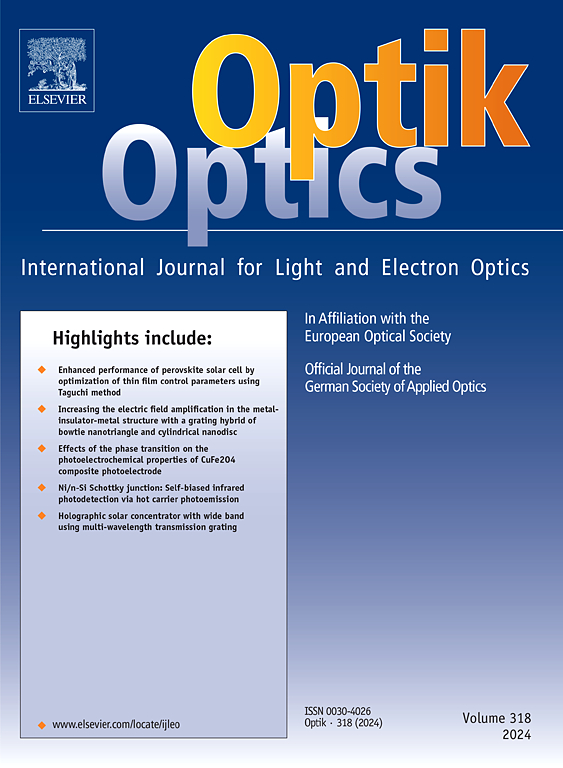稀疏孔径成像系统光路联合控制算法研究
IF 3.1
3区 物理与天体物理
Q2 Engineering
引用次数: 0
摘要
针对稀疏孔径成像系统中相位误差校正差的问题,提出了一种联合最优控制光路控制算法。为了优化稀疏孔径成像系统的成像清晰度,采用随机平行梯度下降(SPGD)算法建立了包含多个压电陶瓷的稀疏孔径成像系统联合控制系统。实验结果表明,不同位移的响应曲线与预期位移曲线基本吻合,不同位移的响应时间可有效控制在0.08 s以内,位置误差可有效控制在±3 nm以内。将SPGD联合控制系统应用于三孔径稀疏孔径成像系统,进行了分辨率板成像的对比实验。对相位误差校正前后的图像进行定量评价,得到校正前的评价值J1 = 0.54,校正后的评价值J2 = 0.78。实验结果表明,该联合控制系统在控制光路精度、校正共相误差、实现亚光束干涉成像等方面是有效的。本文章由计算机程序翻译,如有差异,请以英文原文为准。
Research on joint control algorithm for optical path of sparse aperture imaging system
To solve the problem of poor cophasing errors correction in the sparse aperture imaging system, a joint optimal control algorithm for optical path control is proposed. A stochastic parallel gradient descent (SPGD) algorithm is employed to create a joint control system that incorporates multiple piezoelectric ceramics in a sparse aperture imaging system, aiming to optimize imaging definition. The experimental results show that the response curves of different displacements are basically coincident with the expected displacement curves, the response time can be effectively controlled within 0.08 s for different displacements, and the position error can be effectively controlled within ±3 nm. The SPGD joint control system is applied to a three-aperture sparse aperture imaging system for comparison experiment of resolution board imaging. Quantitative evaluation of the images before and after cophasing errors correction is made, resulting in an evaluation value J1 = 0.54 before correction and J2 = 0.78 after correction. This demonstrates that the joint control system is efficient in controlling optical path accuracy, correcting cophasing errors, and achieving sub-beam interference imaging.
求助全文
通过发布文献求助,成功后即可免费获取论文全文。
去求助
来源期刊

Optik
物理-光学
CiteScore
6.90
自引率
12.90%
发文量
1471
审稿时长
46 days
期刊介绍:
Optik publishes articles on all subjects related to light and electron optics and offers a survey on the state of research and technical development within the following fields:
Optics:
-Optics design, geometrical and beam optics, wave optics-
Optical and micro-optical components, diffractive optics, devices and systems-
Photoelectric and optoelectronic devices-
Optical properties of materials, nonlinear optics, wave propagation and transmission in homogeneous and inhomogeneous materials-
Information optics, image formation and processing, holographic techniques, microscopes and spectrometer techniques, and image analysis-
Optical testing and measuring techniques-
Optical communication and computing-
Physiological optics-
As well as other related topics.
 求助内容:
求助内容: 应助结果提醒方式:
应助结果提醒方式:


